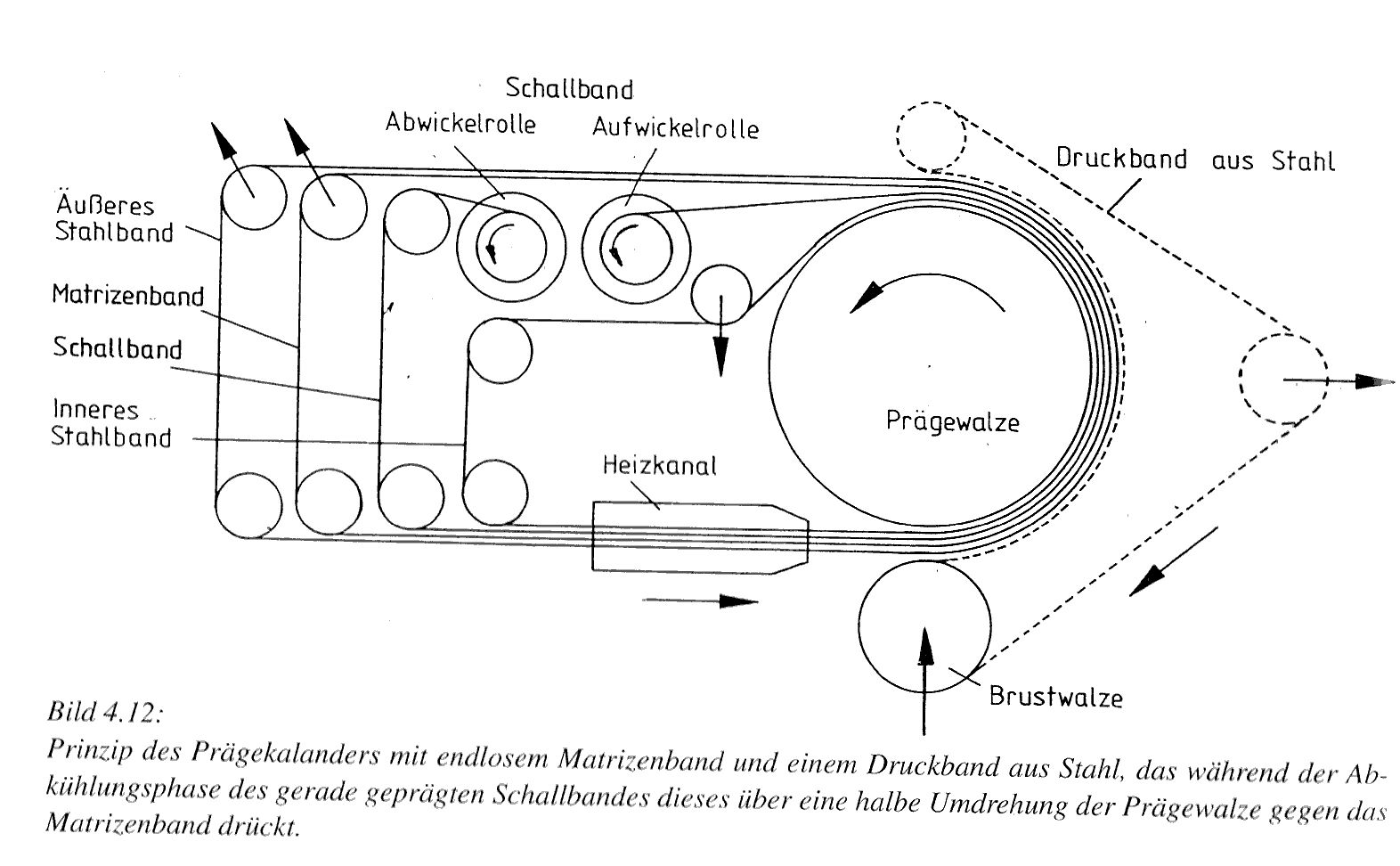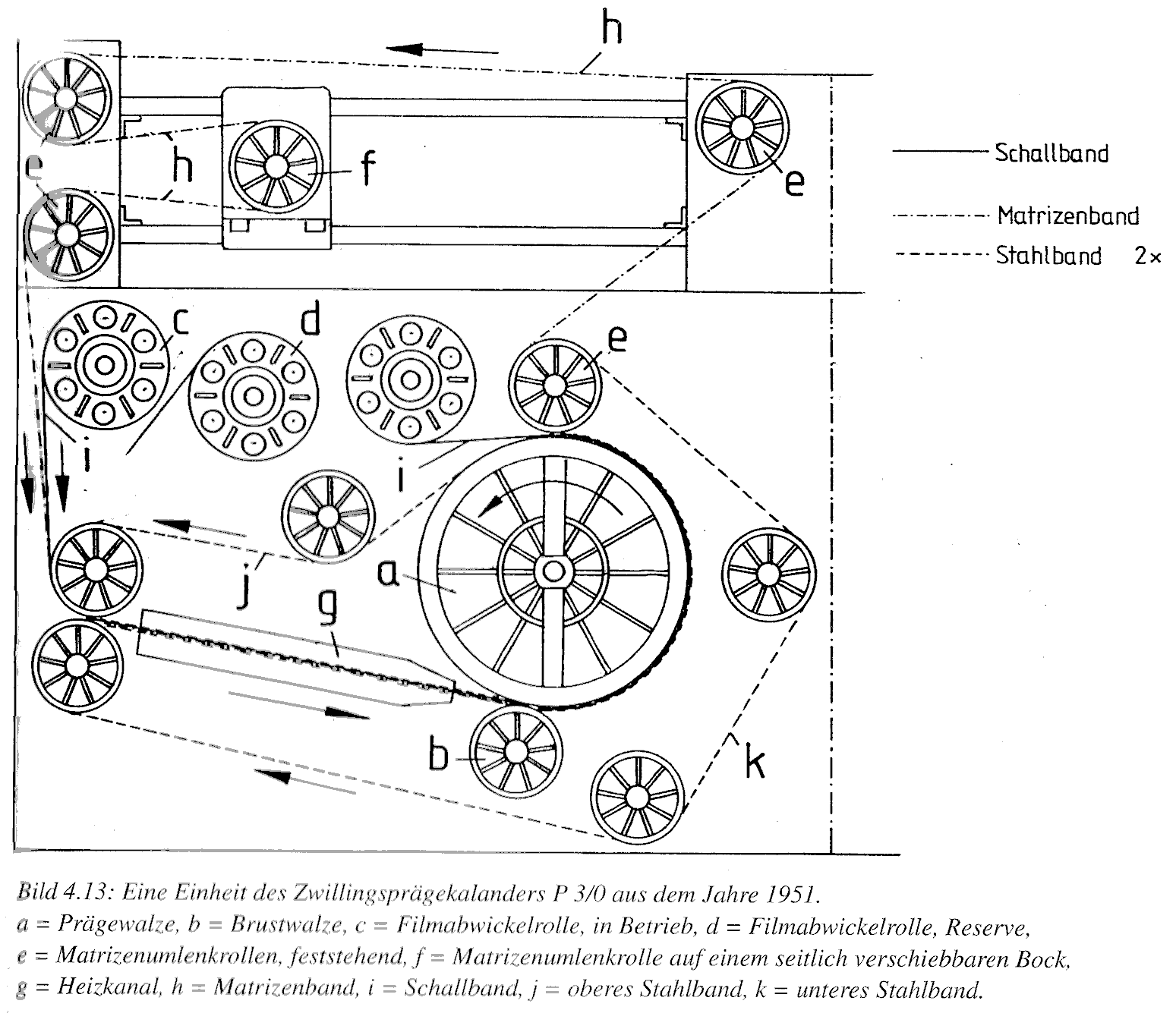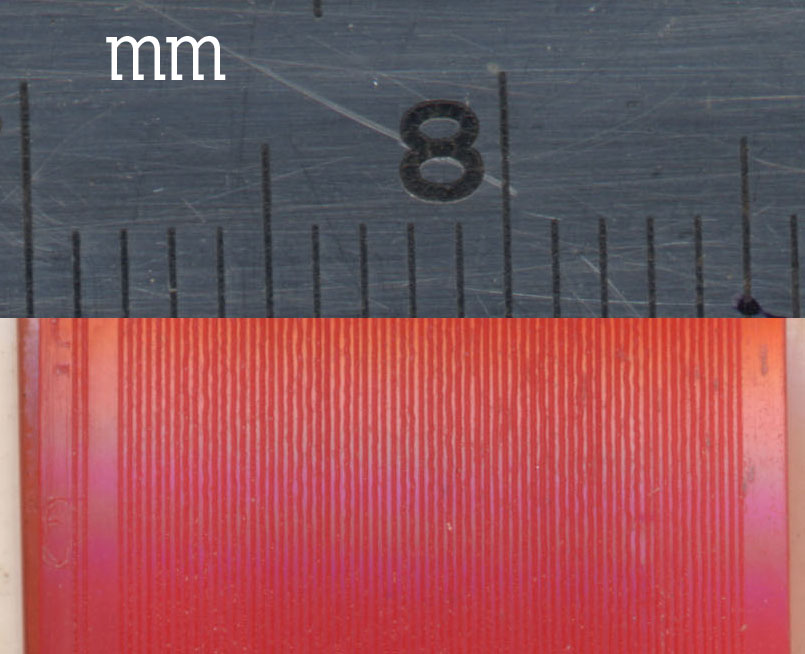Tefi cassettes- how were they produced?
? Tefi cassettes- how were they produced?

A friend has recently been engaged in the restoration of a Tefifon T573, and has been fascinated by the system ever since I made him aware of it. The restoration is now complete and both radio and player are working well, despite numerous age-related problems with the player. Luckily it was one of the players with the conventional pick-up fitted and he had an identical replacement.
The question he asked me was this - how were the 'tapes' actually mass-produced? It's something I've never really considered before so now we both are curious! We wondered if it was a tape that was joined together to make the continuous loop, but that would require great precision in joining to avoid an audible "click" at the join? Then we wondered if the 'tape' was formed in a continuous loop and a roller-type matrix was used to stamp the grooves in to the tape? But this would require a large diameter roller to achieve this (especially the four-hour ones). I did have an idea that the tape was formed into a continuous loop and then the tape was stamped on a roller-type matrix and moved along the roller in a screw-type arrangement to keep the diameter of the roller down to a manageable size, but then how would you produce this?
If anyone can enlighten us as to the method of production of the Tefi cassettes, we would both be very grateful!
To thank the Author because you find the post helpful or well done.
Production of Tefi Tapes

Dear Mike,



To thank the Author because you find the post helpful or well done.
? Tefi tapes - thank you

Dear Rüdiger,
many, many thanks for taking the time to produce such a detailed answer on the subject for us. It certainly made for fascinating reading! I was most surprised to see that the tapes are indeed joined together: great precision must have been used to avoid any noise being generated by the join. Would I also be right to assume that the inner and outer steel tapes were used to maintain stability of the PVC tape whilst it was being heated/pressed?
I shall send a copy of your reply to my friend as he is currently without a computer, and I am sure that he too will be as fascinated by the process as much as I am. I know he is trying to get a copy of Herbet Jüttermann's book, but so far has had no luck.
Once again - thank you!
To thank the Author because you find the post helpful or well done.
Steel tapes

Yes, the inner and outer steel tape was used for stabilization.
I am not sure, but the Jüttemann book should be still available. If you need support please mail to me directly.
Regards
Rüdiger
To thank the Author because you find the post helpful or well done.
Tefi Tape closeup
Dear Rüdiger,
Thank you very much for the excellent presentation on Tefi tape production.
Recently, I received my first Tefi tape, and I am waiting on delivery of my first player. I have never heard a tefi tape, so I decided to just look at it very closely. Here are the results:
Both pictures were created from the same 1200dpi scan on my Epson Perfection scanner. One distinguishing feature of this and other older scanners is very good depth of field. The second picture is at 1200dpi and was cropped where you see the shine on the upper part of the tape in the first picture.
The groove pitch is about 5 tracks per mm, with 67 tracks over 13mm. Each groove is about 100u, or 4mils, as it meets the surface.
Regards,
-Joe
To thank the Author because you find the post helpful or well done.
Different Tefi cassettes
On this model page of the Tefifon M540/HS19 you find a picture of the different formats of Tefi cassettes. Different speed and different size mattered. Tefifon HS9,5 Export allowed 8 hour cassettes! You also find an audio part on model Tefifon M540 (link above) which you can click to hear it - in German. Unfortunately it seems that we have no music from a Tefifon (not Tefifone). But we can find it at YouTube. Here a simple model, Tefifon KC1.
With the "Professional Model Search" we can look for "Other Recorder/Player" under "Player" (Details) but we have not made a selection for Tefifon (yet). I could enter that if somebody would care for it ...
"Other Recorder/Player" results with 125 hits - including Grundig Stenorettes etc. One finds 35 Tefi beginning 1937 with the Teficord.
Pictures of interesting technical details of the playing mechanism can be found on the model page for Tefifion M540. Model Tefi Lugano is a combination of TV, Radio and Tefi. Unfortunately we have no picture yet. A very special combination is the Tefifon HS19/TTZ with tape recording in a single unit. See the technical pictures. Details of the indicator system like Tilting Mirror and the Light-Projector can be seen at Tefifon T573. One of the stereo models is Tefi Claudia T602 which was imported/sold also by Westrex as WT602. I just entered the right selection instead of only "Record player".
When we use the "Advanced search for Antique Radios etc." and type Tefi into the field Manufacturer/Brand then we get 94 models. That is the better mode to find all Tefi - but there are many combinations or other type of sets like normal receivers, for instance like Zwerg GWZ131.
Quite an other most interesting and special system - for listening AND recording - and that for 46.2 hours - is the music-center 5001 etc. from Schaub-Lorenz, originally designed by Graetz.
To thank the Author because you find the post helpful or well done.



